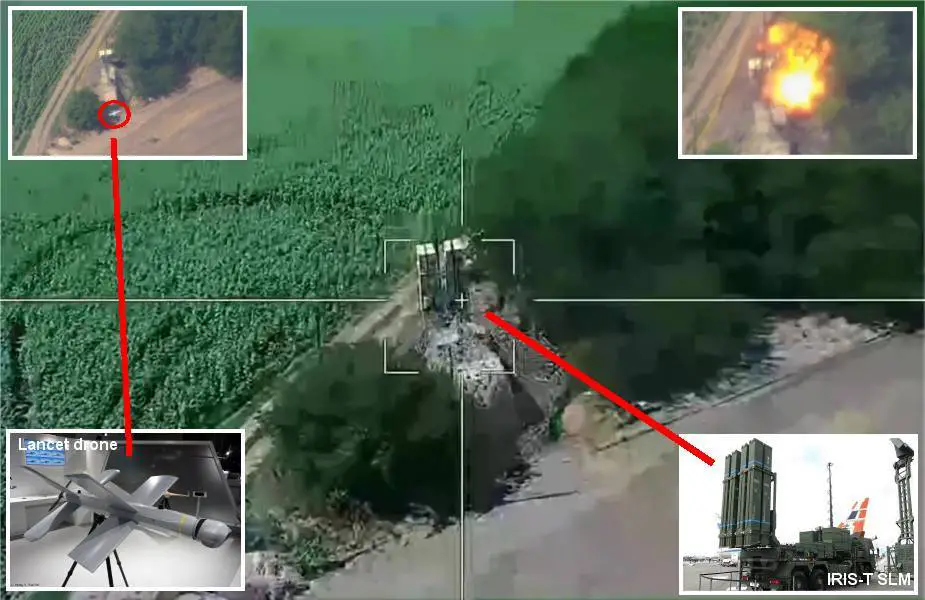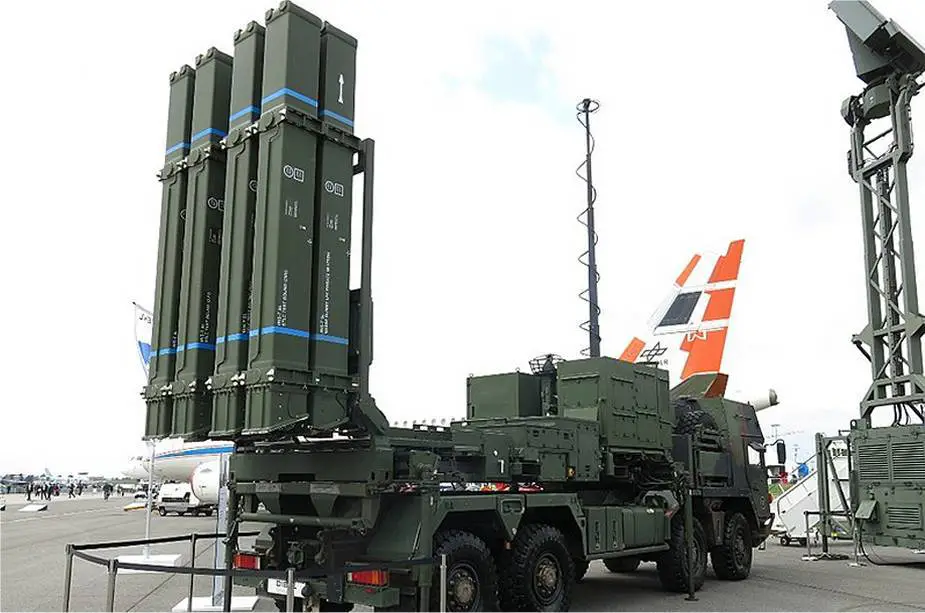According to a video published on the Twitter account "Ukraine Weapons Tracker" on August 1, 2023, Russian forces have destroyed the first Ukrainian IRIS-T SLM air defense missile system using Lancet-3 loitering munition. Citing information published by the German Ministry of Defense, the Ukrainian army has already received 2 IRIS-T SLM as well as air surveillance radar TRML-4D.
Follow Army Recognition on Google News at this link

Russian forces have destroyed the first Ukrainian IRIS-T SLM air defense missile system using Lancet-3 loitering munition. (Picture source Video footage Ukraine Weapon Tracker)
Loitering munitions, often called suicide drones or kamikaze drones, are a type of unmanned aerial vehicle (UAV) designed to engage beyond line-of-sight ground targets. Unlike typical munitions, loitering munitions can "loiter" in the air for a long time before striking, providing a mobile and flexible method of targeting specific threats.
Air defense systems, especially those donated by developed countries like European nations or the United States, often possess advanced technology that allows them to detect and neutralize incoming threats from the air. They can be major obstacles for Russian forces deployed in Ukraine. By using loitering munitions, the Russian army can attempt to neutralize these systems by exploiting their focus on faster, more immediate airborne threats, like conventional missiles or aircraft.
Loitering munitions also have the advantage of being more precise compared to traditional artillery, reducing the chances of collateral damage. They can be guided in real-time, which makes it possible to abort an attack or reassign the target during the flight.
The Lancet-3, the most sizable variant in the Lancet series of loitering munitions originating from Russia, is often referred to as a suicide or kamikaze drone. This piece of sophisticated technology was conceived and brought to life by the Zala Group, a subsidiary of the esteemed Kalashnikov Group.
Capable of a gross takeoff weight of 12 kg, the Lancet-3 can shoulder a payload of up to 3 kg. It is equipped with optical-electronic guidance and a TV guidance module, enabling control over the munition during its final flight stage. The drone's arsenal can be stocked with either high explosive (HE) or HE-fragmentation warheads. It has a maximum range of 40 km (25 mi) and a maximum takeoff weight (MTOW) of up to 12 kg (26 lb).
The IRIS-T SLM (Surface Launched Medium Range) is an air defense system developed by the German company Diehl Defence. As of my knowledge cutoff in September 2021, I can't confirm if this specific system is in service with the Ukrainian armed forces, but I can provide information about the system itself and why it could be considered a modern and effective tool in air defense.
IRIS-T SLM is based on the IRIS-T air-to-air missile, which is a short-range, infrared-homing missile used by a variety of countries around the world. The SLM variant allows the missile to be launched from a ground-based platform, providing a medium-range air defense capability.
The IRIS-T missile is known for its high maneuverability and accuracy, making it an effective weapon against a variety of airborne targets including aircraft, helicopters, and unmanned aerial vehicles (UAVs). The system uses a passive infrared seeker for homing, which makes it less vulnerable to electronic countermeasures compared to radar-guided systems. The IRIS-T missile has a range of up to approximately 25 kilometers and can engage targets at altitudes of up to around 6,000 m.

The IRIS-T SLM is the most modern air defense missile system in service with the Ukrainian army. (Picture source Wikimedia)
News Russia Ukraine War















